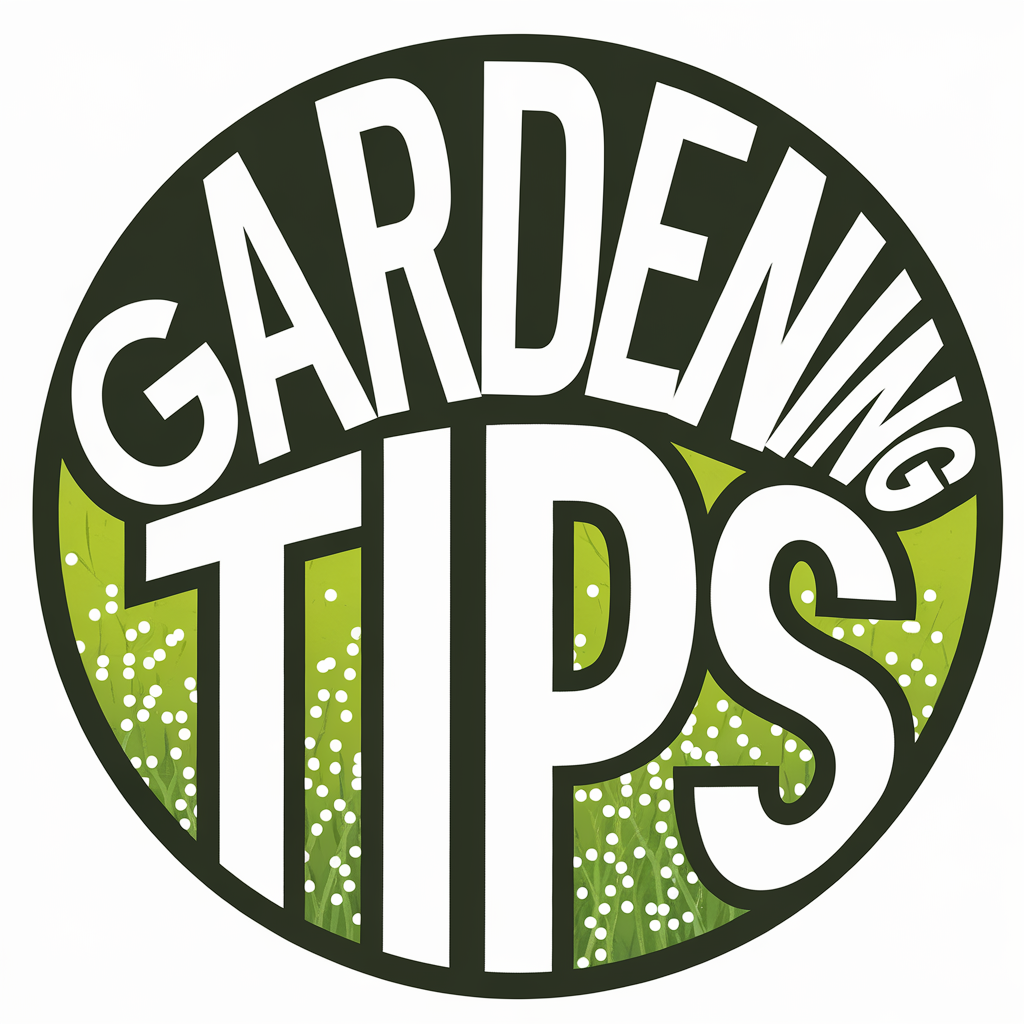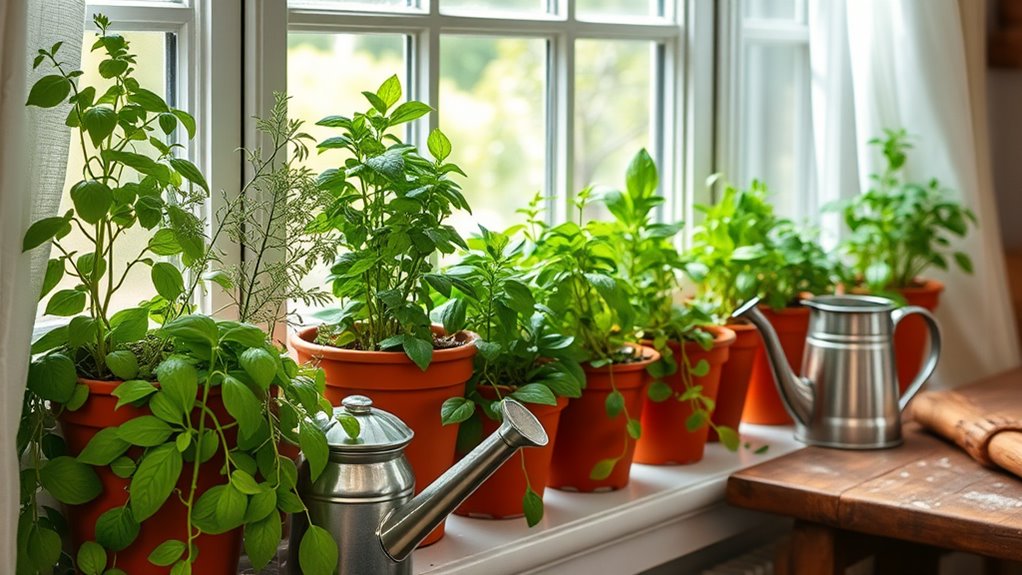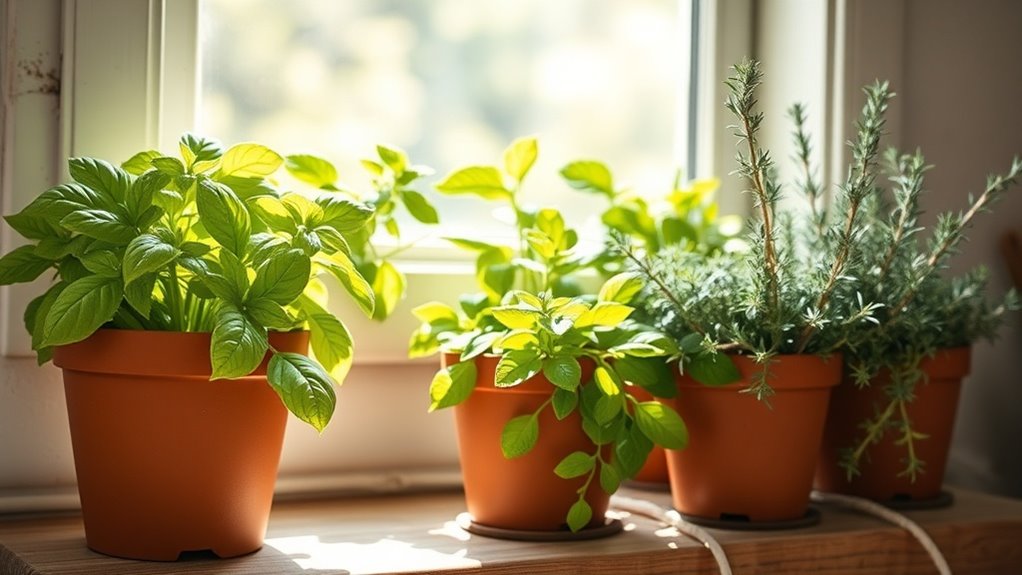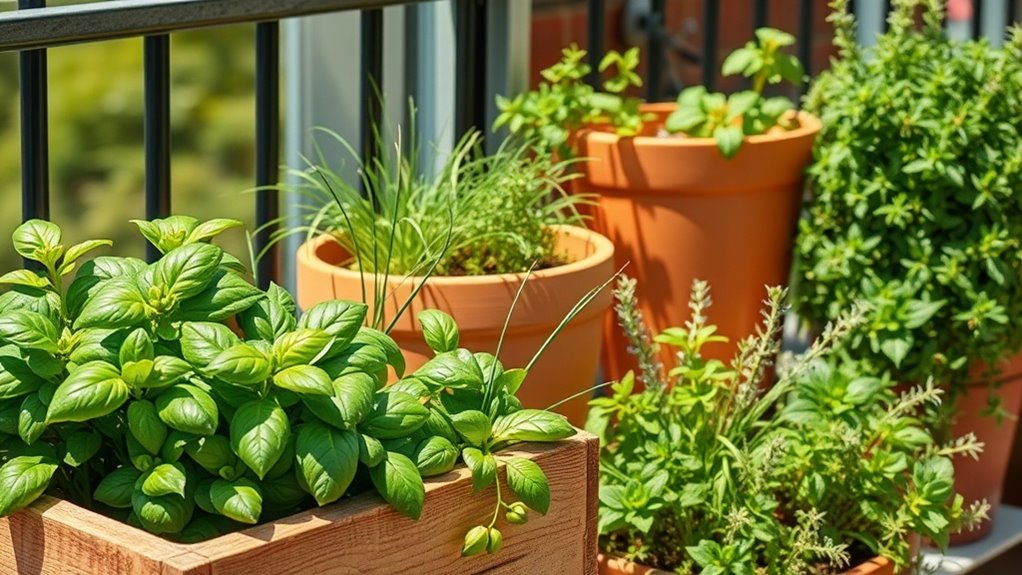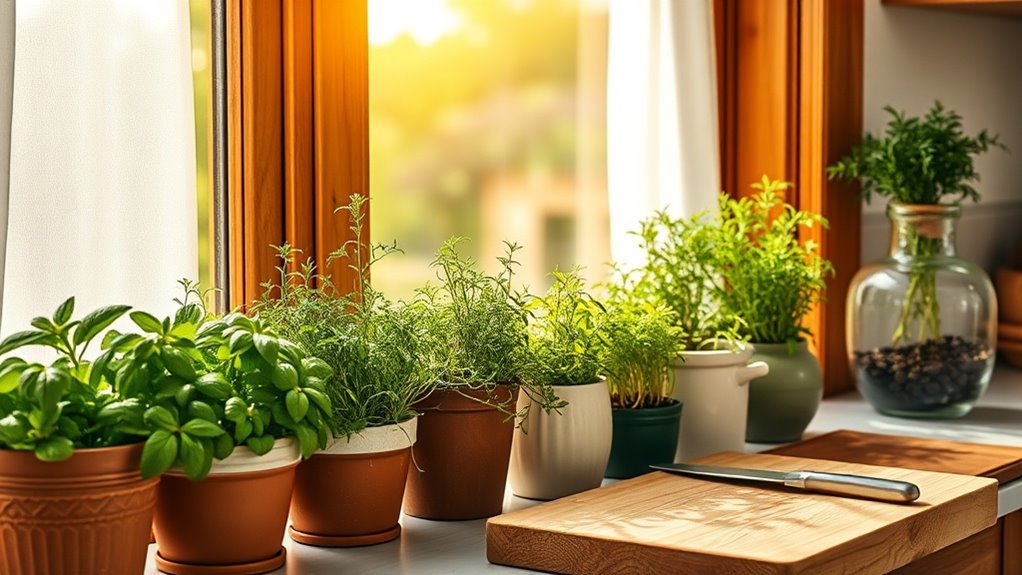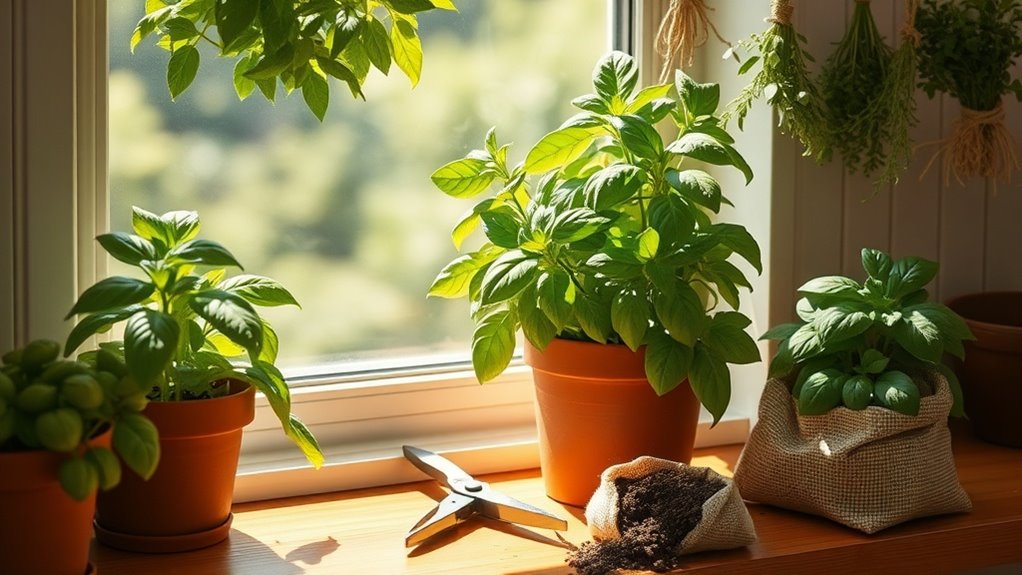How I Grow Fresh Herbs Year-Round Without a Garden
If you want to grow fresh herbs year-round without needing a garden, understanding the basics is crucial. You’ll need to choose the right herbs for your space and set up an effective indoor environment. This includes selecting suitable containers, using the proper light system, maintaining soil health, and managing watering and feeding schedules. Each factor plays a significant role in ensuring your herb garden thrives. Let’s explore how to create a successful indoor herb setup.
Choosing the Right Herbs for Indoor Growth
When you decide to grow herbs indoors, selecting the right varieties is crucial for success.
For kitchen herb growing, consider basil, parsley, and chives due to their adaptability and ease of care.
Choose herbs that thrive in lower light, such as mint or thyme, which can flourish in your home’s ambient conditions, ensuring a bountiful supply for your culinary needs year-round. Additionally, setting up a simple indoor herb growing setup can significantly enhance your ability to grow fresh herbs without the need for a traditional garden.
Setting Up Your Indoor Herb Garden
A successful indoor herb garden requires careful planning and the right setup to provide optimal conditions for your plants.
Begin by selecting appropriate containers with drainage holes to prevent root rot. Fill them with high-quality potting mix designed for herbs.
Position your garden near a window for natural light, or consider using grow lights to enhance growth. Incorporating flavorful herbs can also boost the enjoyment of your home-cooked meals.
Maintain consistent moisture without over-watering.
Essential Lighting for Healthy Herbs
While natural sunlight is ideal for most herbs, you might need to supplement it with artificial lighting to ensure your indoor garden thrives year-round.
Use full-spectrum LED grow lights, as they mimic sunlight and promote healthy growth. Position lights about 6-12 inches above your herbs, and maintain a daily cycle of 12-16 hours to maximize photosynthesis and encourage robust development. Additionally, consider incorporating essential aspects like plant selection to further enhance the success of your indoor garden.
Soil and Containers: Best Practices
To create a thriving indoor herb garden, selecting the right soil and containers is just as important as providing adequate lighting. Use a well-draining potting mix designed for herbs, and choose containers with drainage holes to prevent overwatering. Consider the size and material of the containers for optimal growth. It’s also important to avoid using harmful veggie pairings that can negatively affect the health of your plants.
| Container Material | Ideal Size | Drainage Requirement |
|---|---|---|
| Terracotta | 6-8 inches | Yes |
| Plastic | 8-12 inches | Yes |
| Ceramic | 4-6 inches | Yes |
Watering and Feeding Your Herbs
Properly watering and feeding your herbs is crucial for ensuring robust growth and flavor.
Water your herbs when the top inch of soil feels dry, using a thorough soak method; this promotes deep root development.
Feed your herbs every four to six weeks with a balanced, water-soluble fertilizer diluted to half strength.
Monitor nutrient levels closely, adjusting as necessary to support optimal growth. Additionally, understanding water retention techniques can further enhance your watering efficiency and ensure your herbs thrive.
Harvesting and Maintaining Your Herb Garden
As you cultivate your herb garden, understanding the best practices for harvesting and maintaining your plants is essential for maximizing flavor and productivity.
Always harvest in the morning for optimal aroma and potency. Use sharp scissors or shears to prevent damage.
Regularly trim back plants to encourage bushiness, and ensure adequate light and airflow to prevent mold and pests.
